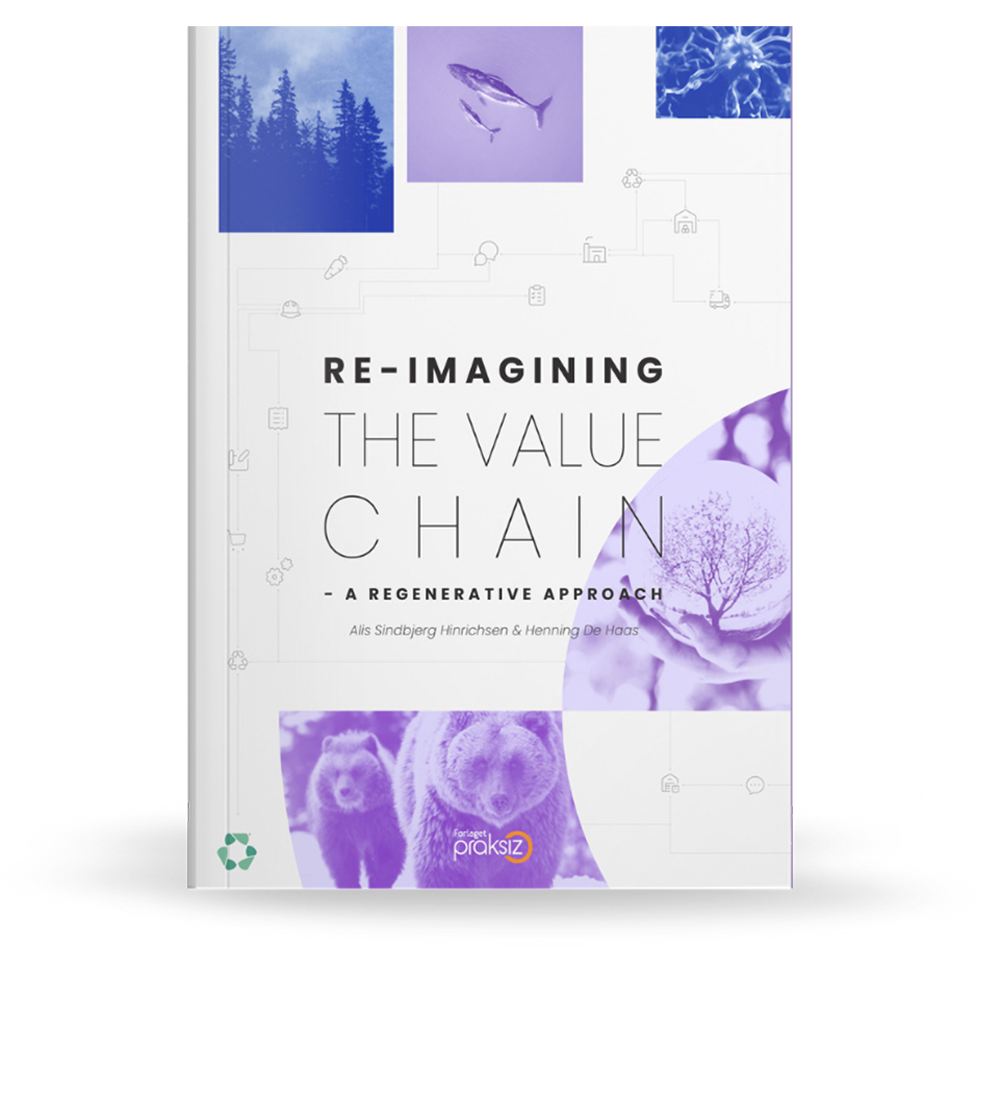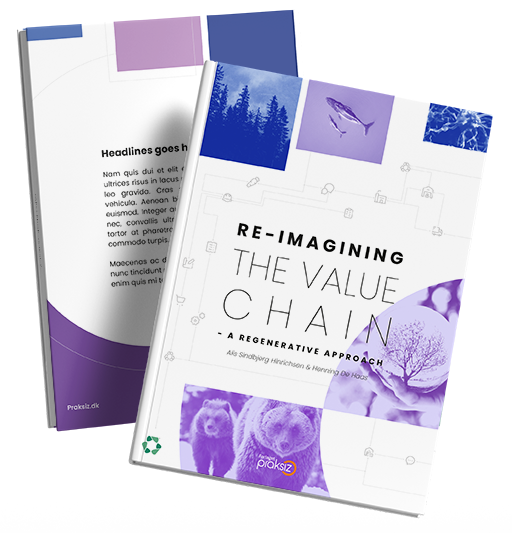By reading this book
you will…
Get an introduction to what a regenerative approach is and the driving forces behind it. In the book we outline a strategic transformation framework, models, and concrete tools for how to transform from today’s mechanistic approach to a regenerative approach explained through examples and cases from companies that have already embarked on the regenerative journey.

What is regeneration?
It is about protecting long-term value of the company
Neutrality, or “do no further harm,” is increasingly seen as an insufficient ambition in light of the natural capital losses and climate tipping points, which threaten the health, security, and livelihoods of billions.
Regeneration is a concept that addresses challenges comprehensively and provides Business and Value Chain leaders with a framework for creating and protecting long-term value, one that aligns the organization to new value drivers, encourages innovation, and builds the resilience of the company.
Beyond neutrality, regenerative approaches aim for complete systems changes that address the root causes of global challenges. The goal is to create the conditions for all life to thrive, generating self-sustaining positive outcomes for nature, people, and the economy. Regeneration offers a bold vision of the future we must achieve rather than the climate catastrophe we must avoid.

Why is a Regenerative Value Chain key?

Resources become scarce:
As the global population grows, the demand for resources such as water, minerals, and energy intensifies. If we do not prioritize regenerative and responsible resource management, we risk depleting these essential inputs for our operations.
Supply Chain Vulnerability:
Extreme weather events, driven by climate change, can disrupt your Value Chain, leading to production delays and increased costs. Vulnerability can pose a significant risk to your company’s operations.
Governments are regulating:
Governments worldwide are becoming increasingly aware of the environmental challenges we face. Regulations are tightening, and companies that do not align with eco-friendly practices may face penalties, restrictions, or even public backlash.
Consumers are shifting:
Consumer preferences are shifting towards eco-conscious products. Failure to adapt to these changing market dynamics can erode your customer base and competitiveness.
It is crucial to recognize that nature is not just a risk factor but also a source of opportunity. Embracing regeneration can lead to innovation, cost savings, and a stronger competitive edge in the long run. Companies that integrate environmental and regenerative considerations into their business strategies are better positioned to thrive in a changing world.
So, what can we do to ensure that nature becomes an ally rather than a risk for our long-term survival?
How can you transform your
Value Chain and your business?
Embed regenerative principles
into the heart of your Value Chain:
Embed regeneration into your company’s core values and operations. Consider environmental impacts at every stage of your business processes, from product design to Value Chain management.
Apply new mental models:
Applying new mental models to become more regenerative requires a shift in our thinking towards various aspects of life, including business, the environment and society.
Work with your resource efficiency:
Implement measures to reduce resource consumption, waste generation, and energy use. Adopt circular economy practices.
Transparency and Technology:
Be transparent about your environmental performance. Regularly report on our progress toward regenerative goals, demonstrating your commitment to stakeholders. Use technology as your anchor.
Collaborate with the wider ecosystem:
Collaborate with governments, NGOs, and industry peers to drive positive change. Pooling resources and expertise can lead to collective solutions for environmental challenges.
Innovation:
Invest in research and development to create sustainable products and solutions that align with evolving market trends.
In conclusion, nature is not a distant concern but a critical factor in your long-term survival as a company.

Would you like to discuss Regeneration in the board?
What are the driving forces behind a regenerative Value Chain? How can you transform and drive future value strategically?
What is a business ecosystem – and what is the benefit of incorporating it as a key element in the transformation?
How can Value Chain technology support the transition and acceleration into a regenerative future?
Learn more about the authors

Alis Sindbjerg Hinrichsen
Is the Business Development Lead at Optilon. She is also an active board member. Alis has more than 25 years of experience in Value Chain in various roles. She has worked for Velux, Danfoss and Grundfos and currently works with business transformation at LEGO. In addition, she has had her own consulting company working with Value Chain Sustainability.

Henning De Haas

